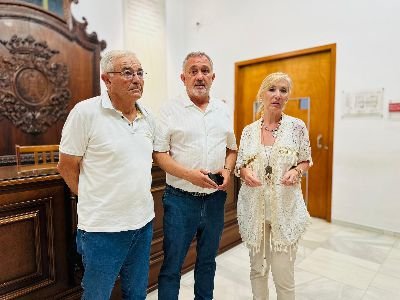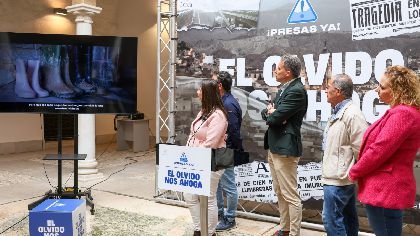Fulgencio Gil completed this session of analysis, monitoring, and project implementation, along with round of meetings with the neighborhood and professionals: «We are all united in this regard. The Nogalte, Béjar, Torrecilla, and Biznaga Rambla channels are extremely urgent projects.»
The mayor recently organized meetings with various districts, as well as with the Faculty of Geographers and Territorial Planning, the Faculty of Architects, and the Irrigation Community.
Fulgencio Gil, mayor of Lorca, stated: «I can no longer use economic calculations as an excuse not to build these dams. It’s only a matter of time before another Dana hits us. They know the work that needs to be done and what will happen when it rains. Doing nothing is not an option.»
On February 18, 2025, the mayor of Lorca, Fulgencio Gil Jódar, organized a working session with the Roads, Canals, and Ports Engineers College at the Murcia headquarters to review the municipality’s urgent needs, especially projects included in the flood defense plan established based on the consequences of the San Wenceslao floods that devastated much of the garden area in 2012. The meeting aimed to share existing statements from social groups, residents, and institutions, as well as the professionals’ opinions from the school.
Present at this meeting, in addition to the mayor, were the councilors for urban planning and major infrastructure, María Hernández and Ángel Meca, as well as the dean of the school, Alejandro Lázaro, and the Secretary of the institution, Alfredo Salar.
The expert group formed after Dana in 2019 analyzed the issue in the districts of Torcilla, Campillo, and Purias, as they are some of the areas at highest risk of flooding whenever there are heavy rains.
The City Council and the Faculty of Engineers agreed on the urgent need to build the rolling dams that serve as a «protective shield» to safeguard Lorca residents. These dams are intended to contain the floods in the headwaters of the Nogalte, Béjar, and Torrecilla Ramblas, whose construction is of «extreme emergency.»
As the mayor stated, the patience of the residents had run out, a sentiment fully shared, as this neglect is unacceptable, and its consequences are loss of human life. We live with it every day, but we note with frustration that outside Lorca, awareness of the problem we face and the fear that residents feel every time the sky darkens is lacking.»
Fulgencio Gil also highlighted the need for procedures to enable the Biznaga Rambla channel, a «vital» infrastructure to prevent water accumulation along these stretches and avoid major flood issues on a large scale.
The poor state of the Ramblas in the municipality of Lorca was also a major focus of this institutional meeting, emphasizing the need for relevant cleaning tasks, debris removal, and maintenance to start as soon as possible so that, if necessary, the channels have the capacity to prevent overflows and problems, as we have experienced in our municipality.
Lorca and road engineers, a shared history
It is worth noting, as a historical note, that precisely the foundation in Spain of this Faculty of Engineers, then called the Roads Engineers School, was one of the direct consequences of the rupture of the second dam of the bridge tank, a tragedy in April 1802, which claimed the lives of 608 people.
Lorca has endured devastating floods throughout history, mourning numerous victims and material damage. For every tragedy, a response followed, learning from the experience endured. Thus, after the Santa Teresa flood in 1879, which caused 800 victims, the response was the drafting and execution of projects integrated into the García and Gaztelu plan. In Lorca, this document materialized in the construction of the third bridge dam and the regrets of the Valdeinfierno tank.
The floods struck the residents and land on October 19, 1973, causing 85 fatalities in that city, and 13 in Lorca, on a fateful day when the Guadalent river recorded a flow of water almost 3,000 m3 per second (comparable to some sections of the Orinoco River), reaching a height of 10 meters. The scale of the disaster prompted the Ministry of Public Works and Urban Planning (MOPU) to undertake the development of a general flood defense plan, which would be unveiled in 1977 and had as its main actions in Lorca the works of the Guadalent river sewage, alongside the extension of upstream and downstream defense walls of the city (to be carried out in the 1980s), as well as the initiation of procedures leading to the construction of the fourth bridge tank dam, with greater capacity than the previous one, higher altitude, and equipped with a much more modern regulatory system.
This intervention was also utilized to clear the accumulated sediment, resulting in a significant decrease in water storage capacity. The need for building the IV bridge was emphasized with the floods of 1986 and 1987, leading to the development of the 1987 road defense plan, which ultimately gave the green light to this project. The work was inaugurated in 2000, with the capacity to stop a flood with twice the force of that in 1973.














Deja una respuesta